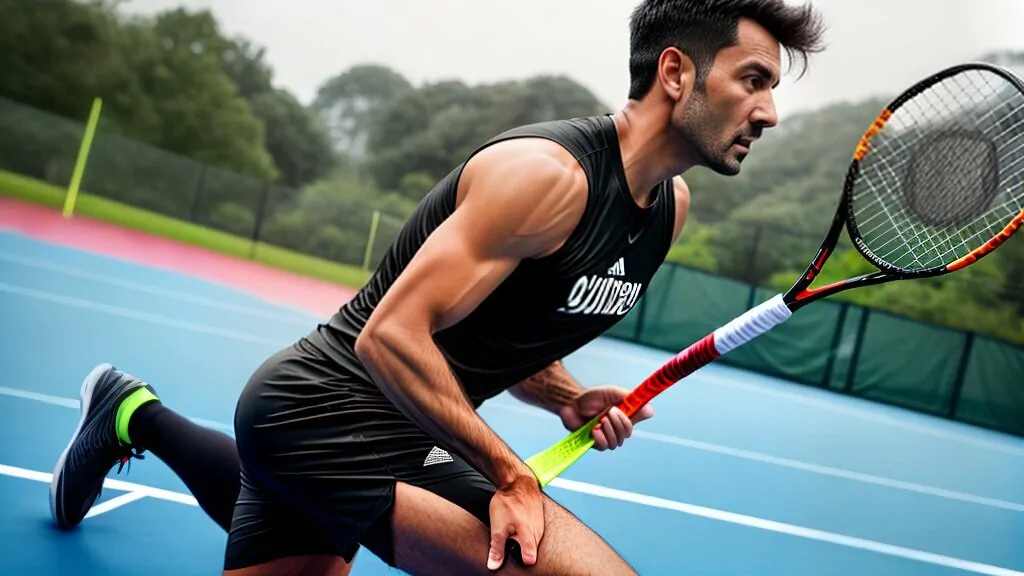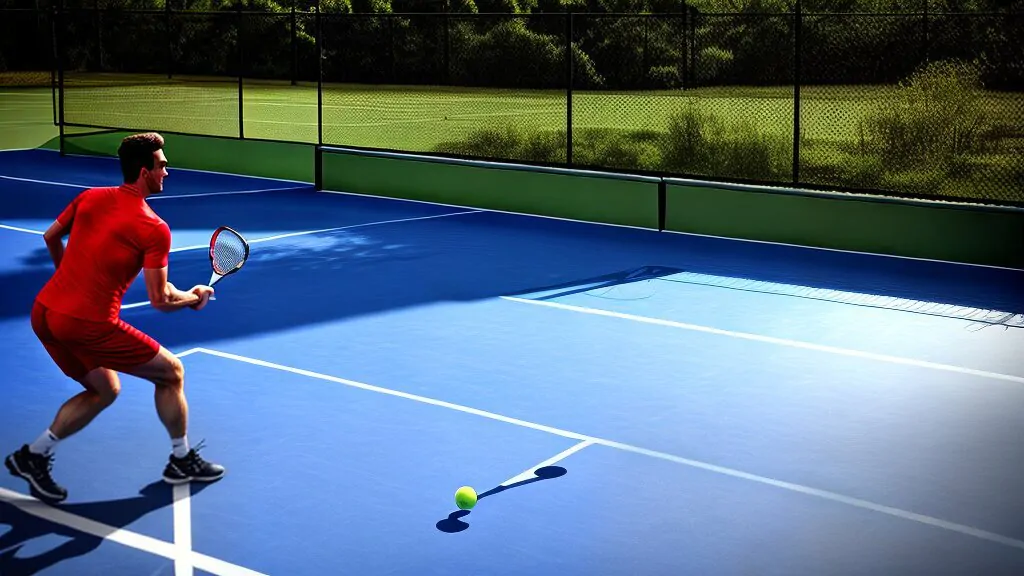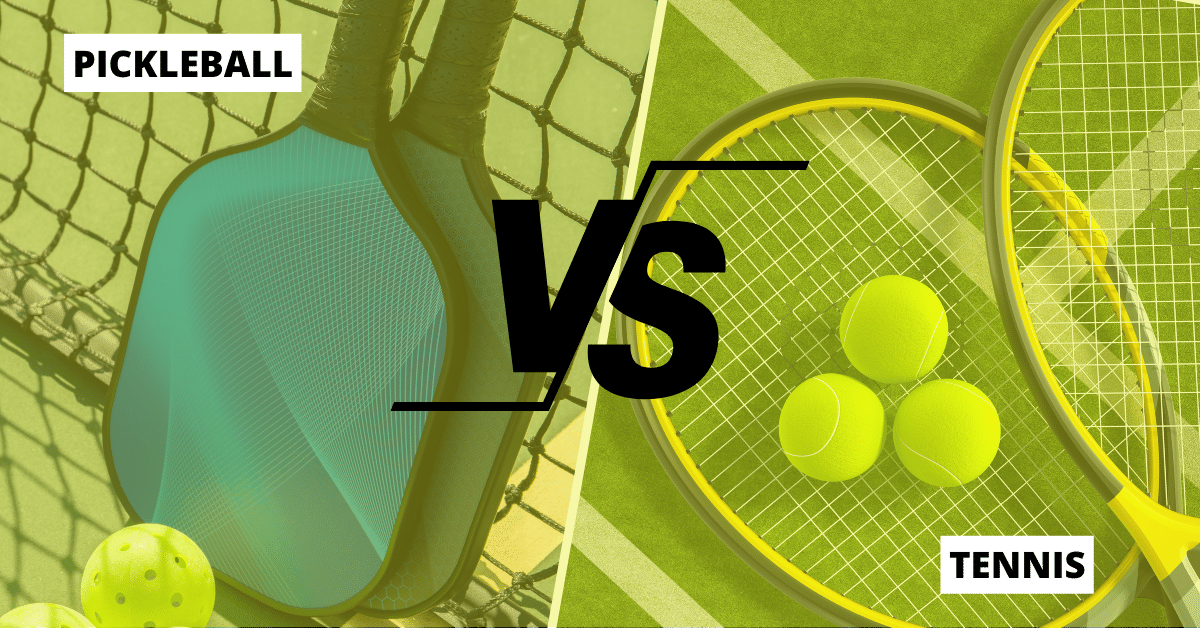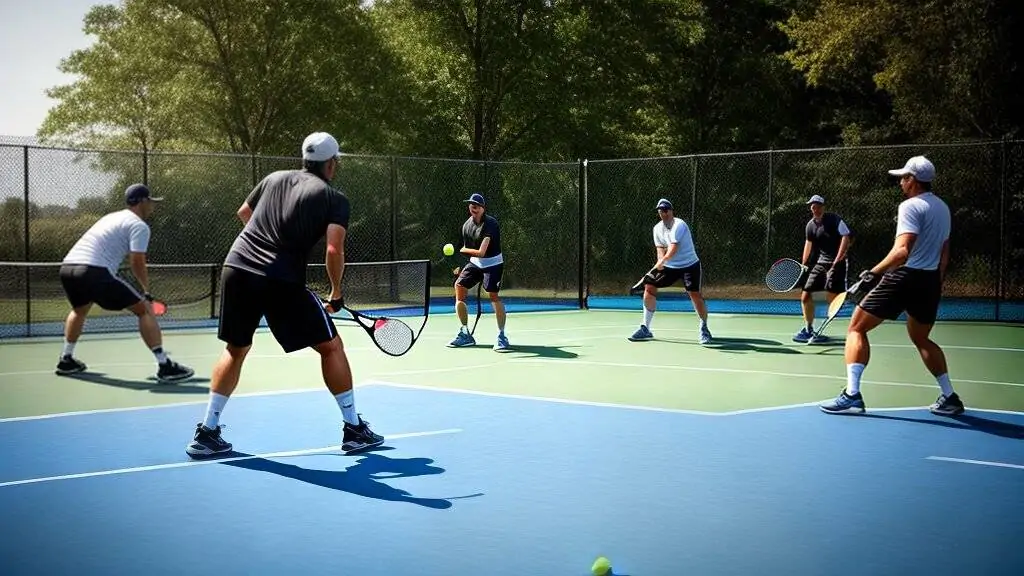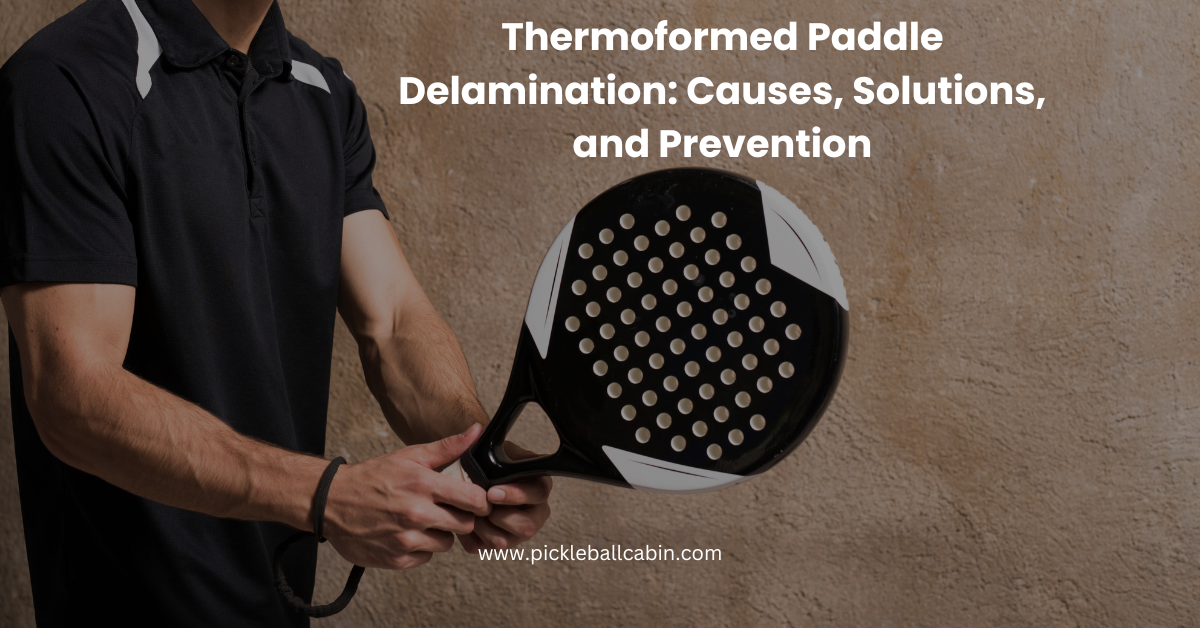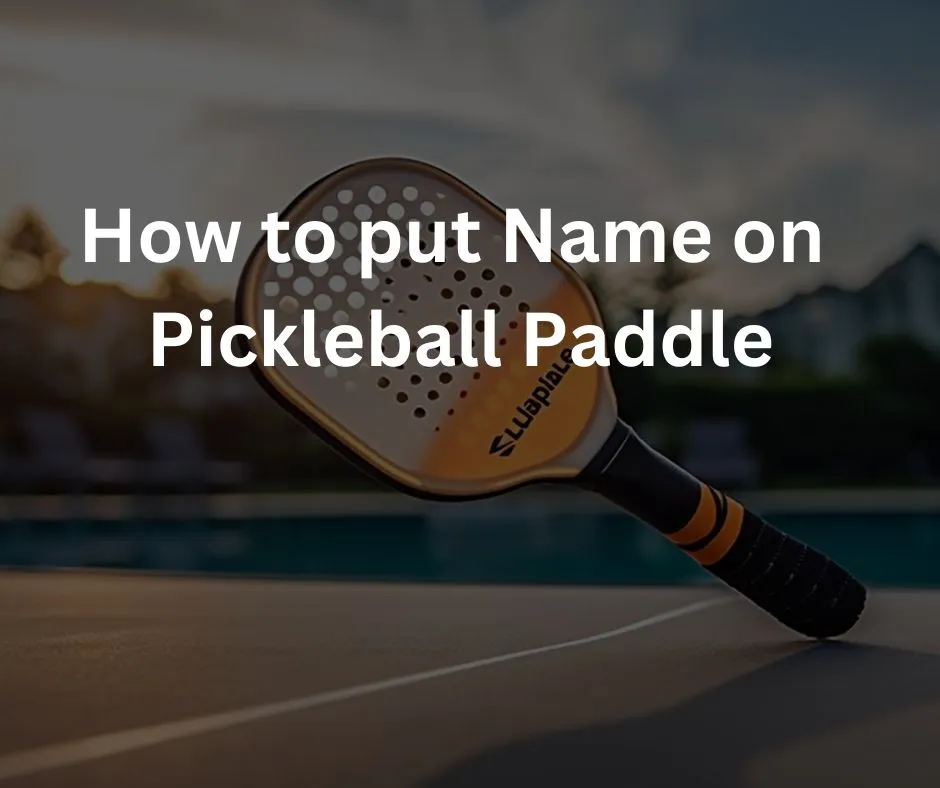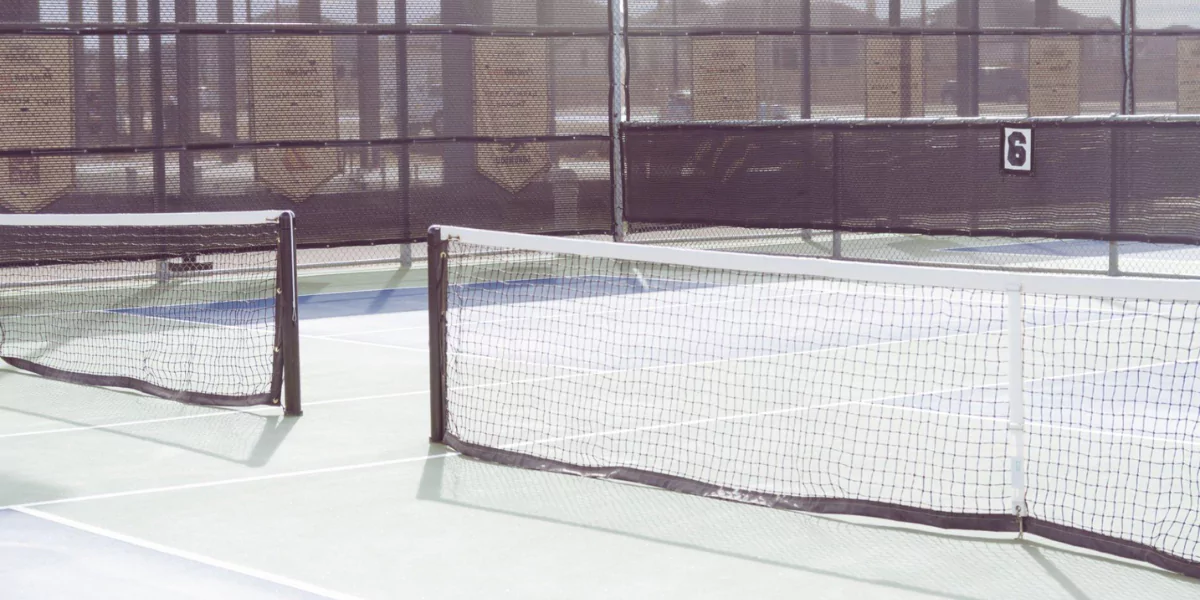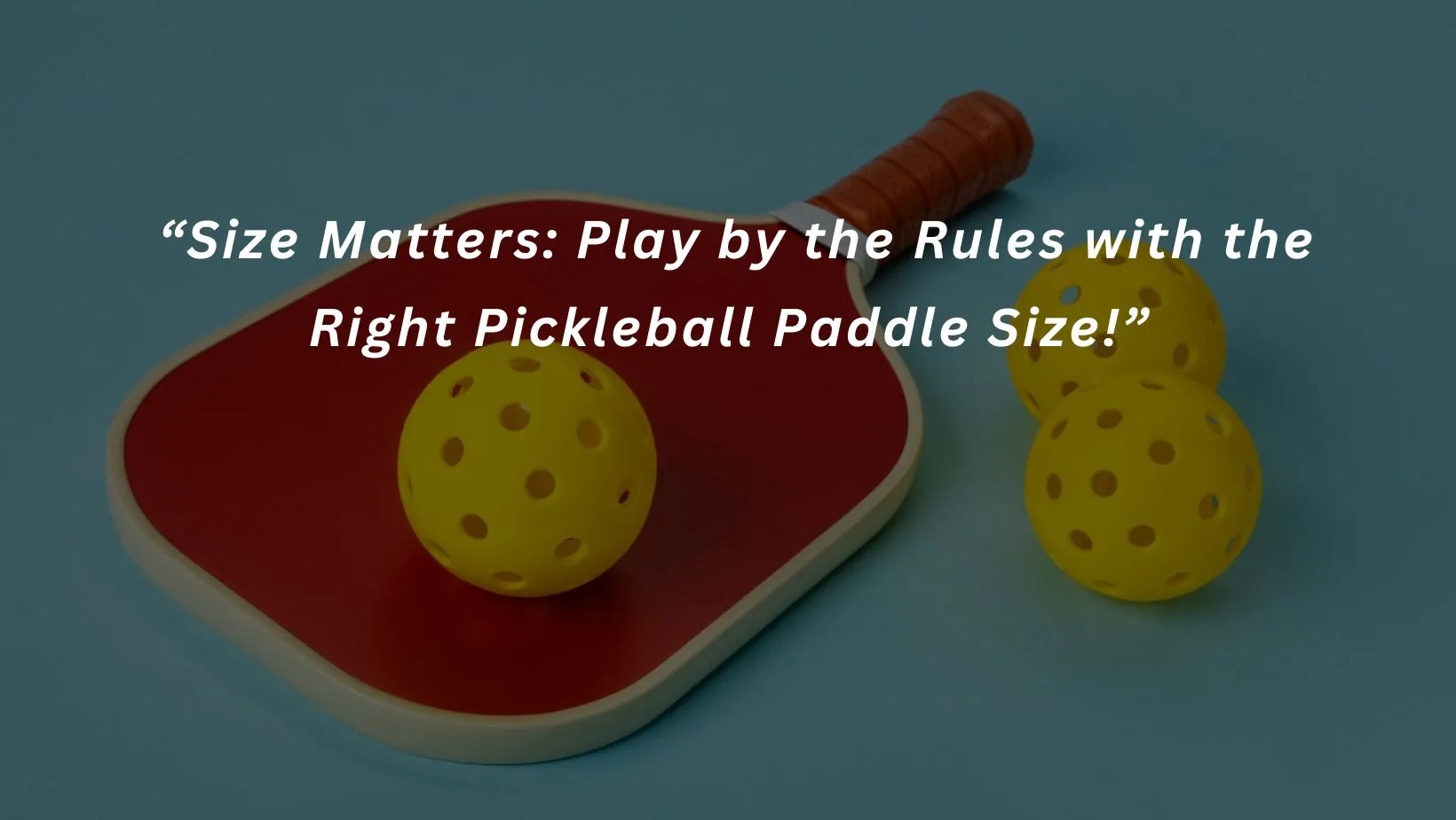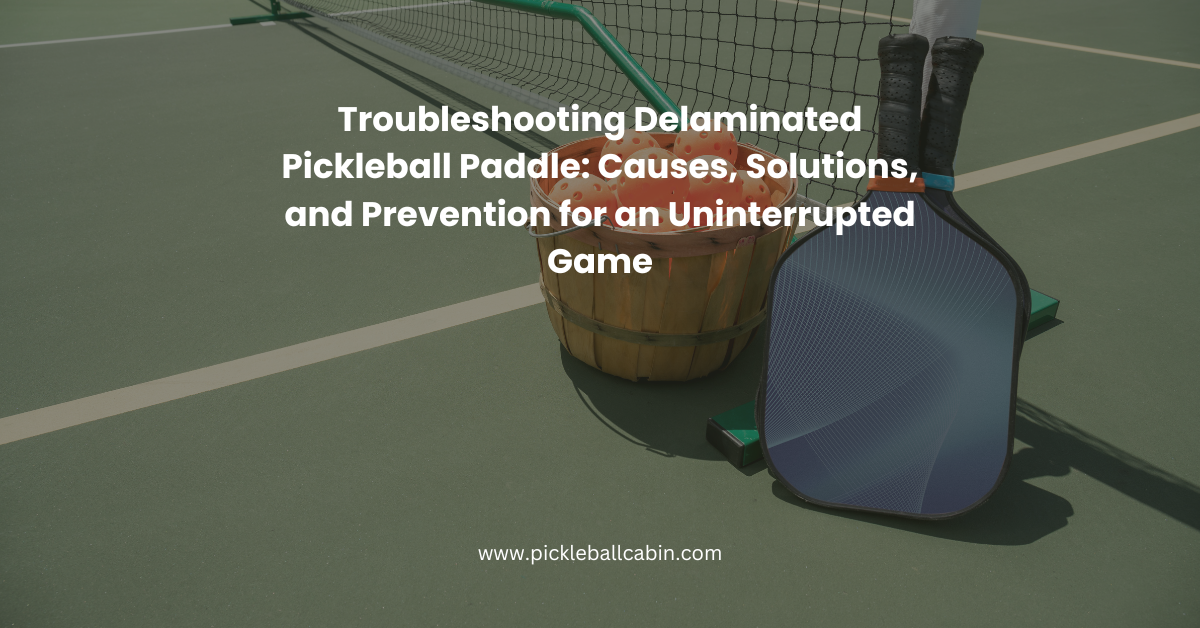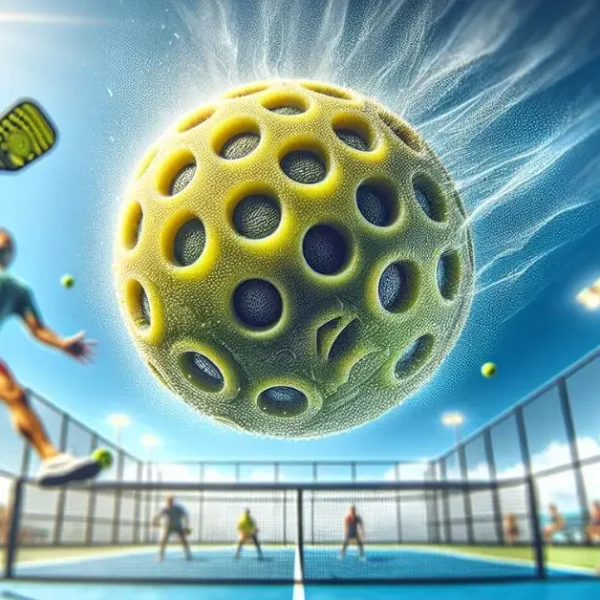If you’re looking for a fun and exciting sport to pick up as a beginner, look no further than pickleball! With its fast-paced action and easy-to-learn rules, pickleball is quickly becoming one of the most popular sports in the United States, and it’s a great way to stay active and social with friends and family.
As a avid pickleball player myself, I’m excited to share my knowledge and experience with you, so you too can become a proficient pickleball player in no time. In this comprehensive guide, I’ll cover everything a beginner needs to know about pickleball, from the basics of the game and essential equipment to techniques, strategies, and injury prevention tips.
Whether you’re a seasoned athlete or a complete newcomer to the sports world, this guide is designed to help you get started with pickleball, master the basics, and start playing fast. So let’s get started!
Key Takeaways:
- Pickleball is a fun and exciting sport for beginners to pick up and stay active.
- This comprehensive guide will cover everything a beginner needs to know about pickleball, from rules and equipment to techniques, strategies, and injury prevention tips.
- By following the advice in this guide, beginners can master the basics of pickleball and start playing fast!
What is Pickleball?
If you’re new to pickleball, it’s a game that combines elements of tennis, badminton, and ping-pong. It’s played on a smaller court with a hard paddle and a plastic ball with holes. Pickleball is often described as a less physically demanding version of tennis, which makes it ideal for beginners, seniors, and people with mobility issues.
The basics
Here are some of the basic rules of pickleball:
- Players can play singles or doubles
- The court is 20 feet wide and 44 feet long with a net at the center
- The serve must be made underhand and diagonally cross-court
- The ball must bounce once on either side of the net before volleys are allowed
- The game is won by the first team to reach 11 points with a two-point lead
Of course, there is much more to learn about pickleball, but these basics will help you get started.
Discover Pickleball: Guide To Playing And Enjoying This Thriving, Fast-Paced Sport 2023
Equipment needed
Here’s a list of the basic equipment needed to play pickleball:
| Paddle | A hard paddle with a non-slip grip |
|---|---|
| Ball | A plastic ball with holes |
| Court shoes | Non-marking shoes with good traction |
As a beginner, it’s best to start with affordable and beginner-friendly equipment. You can always upgrade later on as you improve your skills.
Now that you know the basics of pickleball and the equipment needed, it’s time to start playing! In the next section, I’ll share some beginner-friendly tips to help you get started.
Pickleball Equipment for Beginners
As a beginner, getting the right equipment for pickleball is essential to your playing experience. Here are the three main items you need:
| Equipment | Recommendation |
|---|---|
| Paddle | Look for a paddle that is lightweight, with a mid-sized grip, and made of composite material. This will offer beginners a balance between control and power, while being easy to handle. |
| Balls | For beginners, indoor balls are recommended as they are softer than outdoor balls, making them easier to control and play with. Look for balls that meet USAPA standards. |
| Court shoes | Good court shoes should provide lateral support, have a non-marking sole, and be comfortable to wear for an extended period. Look for shoes with a good grip to prevent slips and injuries. |
While it’s tempting to buy the most expensive equipment, it’s not always necessary for beginners. You can find good quality, affordable equipment that will work well for you. Try renting or borrowing equipment before investing, to find out what suits you best.
Fair Play In Pickleball: Understanding Banned Paddles And USAPA Approved Equipment
Extra Tips: Pickleball Equipment for Beginners
Here are some additional tips to remember when choosing equipment:
- Don’t buy a paddle or shoes solely on their design or brand – prioritize their quality and suitability for your needs.
- Try different paddles before buying, to find the one that feels most comfortable and natural in your hand.
- Invest in a bag or case to protect your equipment and make it easy to transport to and from the court.
Pickleball Rules for Beginners
Understanding the basic rules of pickleball is essential for beginners to get started quickly and enjoy the game. Here is a breakdown of the most important rules to know:
Scoring System
Pickleball is played to 11 points, and the winning team must be ahead by 2 points. Points can only be scored by the serving team.
Serving Rules
The serve must be made underhand and diagonally across the court. It must clear the net and land in the opponent’s service court. The server continues to serve until they make a fault. After that, the serve goes to the other team.
Double Bounce Rule
In pickleball, the ball must bounce once on each side before players can start volleying. This is known as the double bounce rule and helps level the playing field for beginners.
In and Out of Bounds
The ball is considered out of bounds if it lands outside the court boundaries or hits the net and does not clear it. If the ball touches any part of the line, it is considered in bounds.
Non-Volley Zone
Players cannot volley the ball while standing inside the non-volley zone (NVZ), also known as the kitchen. The NVZ is the area within 7 feet from the net on both sides of the court.
Faults
A fault occurs if the ball is hit out of bounds, fails to clear the net, touches the NVZ line during a serve, or if a player steps into the NVZ and volleys the ball. A fault also occurs if a player hits the ball before it bounces on their side after a serve or return.
Knowing these basic rules will help beginners play pickleball confidently and enjoyably. As players gain more experience, they can explore more advanced rules and strategies to improve their game.
The Ultimate Guide To Beginner Pickleball Paddle
Getting Started: Pickleball Techniques for Beginners
One of the keys to becoming proficient in pickleball is mastering basic techniques. As a beginner, it’s important to focus on building a strong foundation of basic skills that will allow you to play the game effectively.
Here are some beginner-friendly pickleball techniques that you can work on:
1. The Serve
The serve is the starting shot of each point in pickleball. Begin by standing behind the baseline, holding the ball in your non-dominant hand. Toss the ball with your dominant hand, and strike it with your paddle as it falls, aiming to land it in the opposite diagonal service court. As a beginner, it’s important to focus on getting your serve in play consistently before worrying about adding power or spin.
2. Dinking
Dinking is a technique used in pickleball to hit the ball softly over the net, often used during the game’s slower, more strategic moments. To dink, move close to the net and use a gentle swing motion to tap the ball over the net, aiming for an area where the opponent can’t reach it.
3. Volleying
Volleying is hitting the ball in the air before it bounces on the court. It’s an essential technique in pickleball, used when returning shots hit close to the net. To volley, step forward to the net and hit the ball with a controlled motion, aiming to return it to your opponent’s side of the court.
4. Grip and Stance
The right grip and stance can make a significant difference in your performance on the court. As a beginner, use a continental grip, where the paddle rests in the V between your thumb and index finger, giving you greater control of the ball. Your stance should be balanced, with your feet shoulder-width apart and your knees slightly bent to give you more flexibility and agility.
As you practice these techniques, remember to take it slow and focus on developing good form and consistency.
Essential Pickleball Skills for Beginners
As a beginner in pickleball, it’s important to develop the key skills that will help you become a proficient player. Here are some of the essential skills that you should focus on:
Footwork
Good footwork is essential in pickleball. It helps you move quickly and efficiently around the court, allowing you to reach the ball and set up for your shots. As a beginner, focus on practicing your footwork by doing drills that involve moving forward, backwards, and sideways. Make sure you maintain a wide and balanced stance, and try to keep your weight on the balls of your feet to remain light on your feet.
Positioning
Positioning is critical in pickleball. As a beginner, you should focus on positioning yourself correctly on the court to maximize your chances of making successful shots. This means being aware of where your opponents are, anticipating their shots, and positioning yourself accordingly. Always try to move to the most advantageous position on the court to be able to keep the ball in play and gain control of the game.
Shot Selection
The ability to choose the right shot at the right time is key to becoming a successful pickleball player. As a beginner, focus on developing a range of shots that you can use in different situations. Practice your forehands, backhands, volleys, and overhead smashes, and learn to use them effectively to keep your opponents off balance. Always be aware of the position of your opponents on the court and aim to hit the ball where they are not.
Court Awareness
Developing court awareness is an important skill for any pickleball player, but especially for beginners. This means being aware of where the ball is at all times, as well as the position of your opponents and your partner on the court. A good way to develop court awareness is to practice playing in different positions on the court, and to communicate effectively with your partner. Learning to “read” the game and anticipate your opponents’ shots will also help you become a more successful player.
Consistency
One of the most important skills for a beginner to develop in pickleball is consistency. Consistency means being able to make shots repeatedly and accurately, without making unforced errors. This can be achieved through practice and repetition. Focus on hitting the ball cleanly and with good technique, rather than trying to hit it too hard. As you become more consistent, you will be able to build up your confidence and gradually add more power to your shots.
Pickleball Strategies for Beginners
Mastering basic techniques and skills is essential for playing pickleball, but employing effective strategies is equally necessary for success on the court. As a beginner, learning some basic strategies can help you improve your performance and gain an edge over your opponents.
Shot Placement
One of the most important strategies in pickleball is shot placement. As a beginner, focus on placing shots where your opponents are not, such as the corners of the court or down the middle. This can force your opponents to make difficult shots and put them on the defensive, giving you an advantage.
Communication with Partner
If you are playing doubles, effective communication with your partner is vital. Make sure to call out who is going for the ball, and communicate your intentions for each shot. This can prevent confusion and ensure that you are both in the right position to make the shot.
Understanding Opponents’ Weaknesses
Another important strategy in pickleball is understanding your opponents’ weaknesses and exploiting them. For example, if your opponent has a weak backhand, focus on sending shots to that side of the court. This can force your opponent to make mistakes and give you an advantage.
Staying Calm Under Pressure
Lastly, it’s important to stay calm and composed under pressure. Don’t let missed shots or mistakes affect your focus or confidence. Learn to stay present and focused on the next shot, and trust in your skills and strategies to carry you through the game.
By implementing these basic strategies, beginners can improve their performance and gain confidence on the pickleball court. Remember to keep practicing and experimenting with different tactics to find what works best for you.
Pickleball Lessons for Beginners
If you’re serious about improving your pickleball skills, taking lessons can be a great way to achieve your goals. While there are plenty of online tutorials and instructional videos available, there’s no substitute for working with a dedicated instructor who can provide personalized feedback and guidance.
When looking for pickleball lessons, start by checking with your local community center or recreation department. Many offer beginner classes or clinics that can help you master the basics. You can also search for pickleball clubs or private instructors in your area.
When choosing a pickleball instructor, look for someone with experience working with beginners, as well as a teaching style that matches your learning preferences. Some instructors may focus more on technical skills, while others may emphasize strategy or mental preparation.
To get the most out of your lessons, come prepared with questions and specific areas you want to work on. You should also be open to feedback and willing to practice on your own time to reinforce what you learn in class.
Remember, learning pickleball is a journey, and progress takes time and effort. Don’t get discouraged if you don’t see immediate improvement. Stick with it, and you’ll be amazed at how quickly you can advance with proper instruction and regular practice.
Staying Safe: Injury Prevention in Pickleball for Beginners
If you’re new to pickleball, it’s important to take precautions to prevent injuries. Here are some tips on how to stay safe on the court:
Warm-Up Exercises
Before starting any sport, it’s important to warm up your muscles to prevent strains and sprains. Try performing some light cardio exercises, such as jumping jacks or jogging in place, to get your blood flowing. Loosen up your arms, wrists, and ankles by doing some gentle stretches before beginning your game.
Proper Footwear
Investing in a good pair of court shoes can help prevent injuries to your feet, ankles, and knees. Look for shoes that have non-marking soles and offer good support and traction. Avoid wearing running shoes or cross-trainers, which are not designed for the stop-and-go movements of pickleball.
Protective Gear
If you’re playing indoors, wearing safety glasses can help protect your eyes from stray balls. If you’re playing outdoors, wearing a hat and applying sunscreen can help protect your skin from sun damage. Additionally, wearing elbow and knee pads can help prevent bruises and scrapes if you fall on the court.
Listen to Your Body
If you experience pain or discomfort during or after a game, it’s important to listen to your body and take a break. Resting, icing, and elevating injuries can help speed up the healing process. If the pain persists, seek medical attention from a trained professional.
Conclusion
By following these injury prevention tips, you can minimize your risk of getting injured while playing pickleball. Remember to always warm up, wear proper footwear and protective gear, listen to your body, and seek medical attention if necessary. Stay safe and have fun!
Pickleball Etiquette for Beginners
As a beginner in pickleball, it’s essential to understand the etiquette guidelines for the game. These guidelines ensure fair play, good sportsmanship, and a positive playing environment for everyone. Here are some key etiquette rules to keep in mind:
- Respect the court boundaries and stay within them. Avoid interfering with your opponents’ shots or their movement around the court.
- When serving, announce the score before each serve and ensure that your foot is behind the baseline. Follow the correct serving order and avoid delaying the game unnecessarily.
- Be mindful of your opponent’s position on the court and avoid hitting the ball at them intentionally. Aim for open spaces instead.
- Be polite and respectful to your opponents, partner, and spectators. Avoid using foul language, making fun of others, or showing bad attitude on the court.
- Clear the court as soon as a game is finished, especially if others are waiting to play. Return any borrowed equipment promptly and thank your partner and opponents for the game.
By following these etiquette guidelines, you can contribute to a positive and enjoyable experience for all players on the pickleball court. Remember, it’s not only about winning or losing, but also about having fun and learning from each game.
Practice Makes Perfect: Developing a Training Routine for Beginners
As a beginner in pickleball, developing a regular practice routine is essential for improving your game. Here are some tips to help you create a structured training plan:
- Set goals: Determine what you want to achieve in your pickleball game. Is it improving your accuracy, stamina, or footwork? Setting specific goals will help you stay motivated and focused.
- Structure your sessions: Divide your training time into segments to work on different aspects of your game. For instance, you can spend the first 10 minutes warming up, the next 20 minutes on pickleball techniques, and the last 30 minutes on practicing strategies and game situations.
- Track your progress: Keep a record of your performance, such as how many serves you make in a row or how many points you win. This will help you identify areas where you need to improve and celebrate your progress.
- Practice with others: Playing with other beginners or more experienced players can help you learn new techniques and strategies. Participating in doubles games can also improve your communication and team skills.
- Participate in drills and games: Incorporate drills and games in your practice sessions to simulate real game situations and enhance your skills in a fun way.
Remember, consistency is key. Stick to your training routine and make incremental progress each day. With time, you will see your pickleball game improve and become more enjoyable.
Finding Pickleball Communities and Tournaments for Beginners
Playing pickleball with a community of like-minded enthusiasts can be a great way to improve your skills, learn new strategies, and make new friends. Fortunately, there are many options available for beginners to find pickleball communities and tournaments in their area.
One way to find local pickleball communities is to search online for local clubs or associations. Many cities and towns have dedicated pickleball clubs that organize regular events, tournaments, and social gatherings for players of all skill levels. You can also check with your local community center or recreation department to see if they offer pickleball programs or events.
Another option is to use social media to connect with other players. There are many pickleball groups on Facebook, Instagram, and other platforms where players can share tips, arrange meetups, and discuss the sport. You can also search for pickleball hashtags to find other players and communities online.
Participating in pickleball tournaments is another great way to connect with other players and improve your skills. Many tournaments cater to players of all levels, from beginners to advanced players. Check online for upcoming tournaments in your area, and don’t be afraid to sign up even if you’re new to the sport.
Remember, playing pickleball is not just about winning, it’s also about having fun and meeting new people. Don’t be afraid to put yourself out there, connect with other players, and enjoy the game!
Conclusion
As a beginner in pickleball, mastering the basics and developing essential skills is crucial to enjoying the game and improving your performance. By understanding the rules, investing in suitable equipment, and learning proper techniques, beginners can quickly progress their skills and become proficient players.
It’s important to listen to your body and take precautions to avoid injuries while playing. Remember to practice good sportsmanship and adhere to proper etiquette guidelines when on the court.
As you continue to play, consider joining a local club or community to connect with other players and participate in tournaments. Practice regularly and set achievable goals to track your progress and push yourself to improve.
Most importantly, have fun! Pickleball is a great way to stay active, meet new people, and challenge yourself both mentally and physically.
FAQ
Q: What is Pickleball?
A: Pickleball is a paddle sport that combines elements of tennis, badminton, and ping pong. It is played on a smaller court with a solid paddle and a perforated plastic ball. The objective is to hit the ball over the net and into the opponent’s court, scoring points when they fail to return it.
Q: What equipment do beginners need for Pickleball?
A: Beginners will need a pickleball paddle, pickleball balls, and comfortable court shoes. It is also recommended to wear appropriate athletic clothing and bring water to stay hydrated during play.
Q: What are the basic rules of Pickleball?
A: The basic rules of pickleball include serving underhand, allowing only one bounce per side before volleys, and scoring points only when serving. There are also rules regarding the court boundaries, faults, and player positions during doubles play.
Q: What are some beginner-friendly techniques for Pickleball?
A: Beginner-friendly techniques in pickleball include mastering basic shots like the serve, forehand, and backhand. It is also important to learn proper grip, stance, and footwork to improve overall control and accuracy.
Q: What are the essential skills beginners should focus on in Pickleball?
A: Beginners should focus on developing essential skills such as footwork, positioning, shot selection, and court awareness. These skills will help improve overall performance and strategy on the pickleball court.
Q: Are there any strategies beginners can use in Pickleball?
A: Yes, beginners can employ strategies such as shot placement, communication with a partner (in doubles play), and observing opponents’ weaknesses. These strategies can help improve gameplay and increase chances of winning.
Q: Are there pickleball lessons available for beginners?
A: Yes, there are various options for beginners to take pickleball lessons. Local community centers, pickleball clubs, and online platforms offer lessons taught by experienced instructors, which can greatly enhance skills and knowledge of the game.
Q: How can beginners prevent injuries while playing Pickleball?
A: To prevent injuries, beginners should warm up before playing, stretch properly, and use proper technique and form during gameplay. It is also important to listen to your body and seek medical attention if necessary.
Q: What is the etiquette for beginners in Pickleball?
A: Beginners should practice good sportsmanship, call the score accurately, respect court boundaries, and be courteous to other players. Following these etiquette guidelines will create a positive playing environment for everyone.
Q: How can beginners develop a training routine for Pickleball?
A: Beginners can develop a training routine by setting specific goals, structuring practice sessions, and tracking their progress. It is also beneficial to practice with others and participate in drills and games to improve skills.
Q: How can beginners find Pickleball communities and tournaments?
A: Beginners can find Pickleball communities and tournaments by connecting with local clubs, social groups, and online platforms. These resources provide opportunities to meet other players and participate in organized play.
